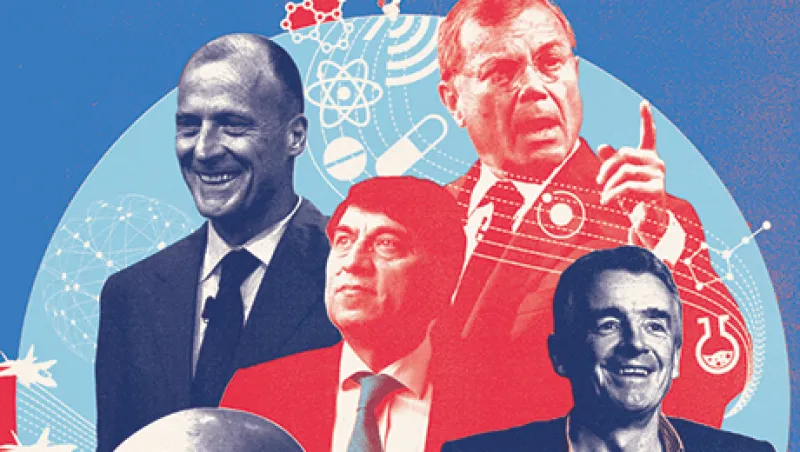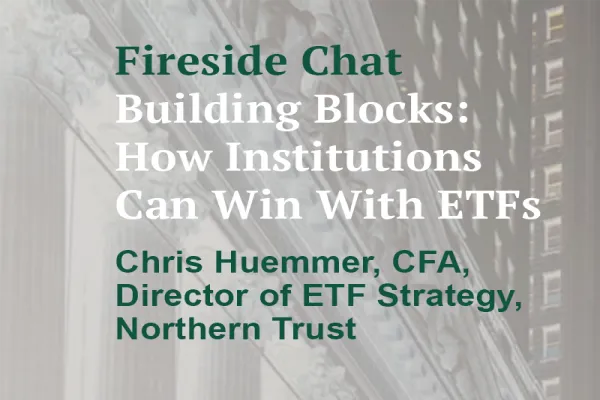Cardboard boxes would hardly seem likely to be the latest business craze taking Europe by storm.
But in the hands of Smurfit Kappa Group, an Irish paper and packaging manufacturer, the cardboard box has been transformed from the humblest of commodities into an innovative sales and marketing tool. So much so, reports equity analyst Barry Dixon of Davy Research, that Smurfit is revolutionizing the way retailers are displaying and selling consumer goods across Europe.
Led by discount grocers like Aldi, Lidl, and Tesco, giant European merchandisers are using shelf-ready packaging to move product and save money. From beverages and foodstuffs to household cleaning agents, Smurfit’s redesign has landed the Dublin-headquartered company a top spot on the 2017 All-Europe Executive Team, Institutional Investor's annual ranking of the region's top corporate leaders.
“If you walk into a supermarket chain like Tesco,” Dixon says, “you’ll see bottles of shampoo still in a corrugated box. The box sits on the shelf, it’s attractive, and it helps advertise the product.”
Shelf-ready packaging also helps retailers hold the line on labor costs. “Rather than have a store clerk taking products out of a container” and stacking wares on the shelf, the Dublin-based analyst adds, “you just tear off the front of the box, and you don’t have a lot of people shelving. All the paper producers [in Europe] are copying Smurfit now.”
Such creativity and innovation are among the reasons that Smurfit is ranked No. 1 in its sector in the small- and midcap category in the latest survey. To compile this year’s list, we asked a mix of credit and equity analysts as well as institutional investors to rate the best European businesses and top executives. Weighting the results by company size, II ranked the most honored companies along with the leading chief executives, chief financial officers, and investor relations managers across 31 sectors.
The magazine also asked a small cohort of top-tier European analysts, as named in II's 2017 All-Europe Research Team, to comment on top businesses from Ireland, France, and Italy.
By all accounts, it takes a superior CEO to make a great company. “Management matters a great deal,” says Eduardo Lecubarri of J.P. Morgan's Cazenove, II's top analyst covering the small- and madcap category on the Continent. “But I think management quality matters a lot more at a small company. In a large organization there’s usually a much deeper bench, with a lot more senior people making decisions and building consensus.”
“Smaller enterprises,” says Lecubarri, who follows between 150 and 200 companies across Europe, “are typically at an earlier stage in the development cycle and can be thrown off course. The worst Formula One driver never wins, so you’re never going in the right direction with the wrong person at the top.”
He adds, “Younger and more inexperienced companies have more frequent cases of fraud. From an investment perspective, when you see a team that says one thing and does another, run away.”
Having a sturdy vision for the future and the willingness to make and execute decisions are key as well. Anthony Smurfit, the 54-year-old chief executive and scion of the paper business's founding family, is credited for his skill at not only reinventing the cardboard box but pushing it into new markets in Latin America. Smurfit is now the No. 1 player in Colombia and Venezuela, and No. 2 in Mexico.
“Historically, the paper and packaging sector was a serial destroyer of capital,” notes Dixon. “Like the airline industry, it was cyclical — characterized by fantastic, earth-shattering upsides and jaw-dropping downsides. In the last 20 years, that has changed. Profit margins have increased structurally, and Smurfit has been in the forefront.”
Along with returning value to shareholders – Smurfit’s share price has jumped by 26 percent over the past 12 months, significantly outperforming the benchmark FTSE 100 Index's 13.5 percent – the CEO earns kudos for being "pragmatic," Dixon says. The company transferred its primary stock listing to the London Stock Exchange in March 2016. "After 40 years in the Irish [stock] market, it’s a bold move,” Dixon adds, “Tony will do what it takes to improve business performance and not be bound by emotion or sentimentality.”
Beyond cardboard boxes, management prowess also played a key role in making Intesa Sanpaolo the most honored European bank in II's survey. To claim that status, Intesa, which is headquartered in Turin, had to outshine 600 banks in the Italian market, where it holds more than 20 percent market share in each of its business lines. The bank beat out a gaggle of global powerhouses, including Banco Santander of Spain and BNP Paribas of France, which tie for second place.
In Italy, notes banking analyst Alastair Ryan of Bank of America Merrill Lynch, Intesa outstrips its main competitor, UniCredit, on every front, boasting fewer bad loans and nonperforming assets, stronger deposit performance, and more growth in its nonbanking income. By adding insurance and wealth management to its mix of products and services, it has also succeeded at wooing high rollers as depositors and clients. “Italy is a wealthy country,” says Ryan, co-head of BofA Merrill’s London-based banking research team, “and Intesa has been very good at cross-selling.”
Intesa is “stable, well capitalized, and has fewer bad debts” than rivals, helping it create “a virtuous circle” in capital flow, Ryan adds. As the bank’s depositor base expands, Intesa gains greater access to cheaper funding, enabling it to profit by making more loans. At the same time, its swelling depositor base forms a built-in audience for its fee-based products and services. Over the past three years, Intesa has increased assets under management by 30 percent even as many of Italy’s banks have seen assets decline or, like UniCredit, have sold them to raise needed capital, according to the analyst.
He attributes much of Intesa’s success to a judicious and stable management team that has steered the bank through global financial crisis and the euro crisis over the past 15 years. He credits especially both 55-year-old Carlo Messina, chief executive since 2013 and a 22-year veteran of the bank, and previous CEO Corrado Passera, who headed Intesa from 2002 until 2011. Under their guidance, Ryan says, Intesa was “able to stay out of politics and resist the political pressure for growing market share with acquisitions” that resulted in trouble for competitors like UniCredit.
Shareholders have benefited from its success. In 2016, Intesa paid out a cash dividend of €3 million ($3.3 million), or 90 percent of the Italian banking sector’s dividends. Not too shabby for a bank with just 16 percent of the country’s overall banking assets. Meanwhile, its stock price, Ryan notes, has appreciated by 60 percent over the past five years, while rival UniCredit’s shares slumped by 30 percent.
In II's survey of the European aerospace and defense sector, French aircraft manufacturer Airbus takes first place. Best known for single-aisle jetliners, including the reliable A320 family of aircraft used by U.S. carriers like American and Delta, Airbus also turns out helicopters and fighter planes for the military and an assortment of space-age products, such as rocket launchers.
By any measure, it’s a giant — employing 133,000 workers and claiming revenue last year of €67 billion. In its battle-of-the-titans rivalry with U.S. competitor Boeing Co., moreover, Toulouse-based Airbus has been gaining altitude, notes Benjamin Fidler of Deutsche Bank, II's top-rated aerospace analyst.
The “reengined” Airbus A320 jetliner “has been able to leapfrog into the lead” against Boeing in vying for dominance among narrow-body commercial airliners, he explains. And with the launch of the A350 commercial jet, Airbus’s midsize jetliner designed to compete with the Boeing 787 Dreamliner, Fidler says, the Europeans are “closing the gap to Boeing in wide-body too.”
Thomas Enders, Airbus’s 58-year-old CEO since 2012, has played a major role in the company’s gains. Under Enders, the management team, which includes Harald Wilhelm, the sector’s top-ranked chief financial officer, is not only imposing its vision on the future but overcoming past weaknesses. Airbus has been wrestling with what Fidler calls “missteps and challenges” with parts and suppliers for the A350 and, more grievously, difficulties with the A400M, a four-engine military transport plane; in 2015 an A400M Atlas was involved in a deadly crash in Spain.
“Airbus has not been consistently good,” the analyst acknowledges, “but the issues have much to do with the complexity of its products and the legacy of decisions made by prior management.”
While focusing the company on airplane delivery and performance and on raising the bar on quality, Enders has endeavored to consolidate Airbus’s operations, which had been a collection of sometimes competing factories and offices in Spain, France, and Germany. He shuttered a Paris office and revamped the company’s board structure by easing out government officials.
Now, with planes on order valued at more than €1.06 trillion — a ten-year backlog — Airbus’s management team has some breathing room to plan for the future. And stockholders are seeing the fruits of its efforts. Shares have climbed 43 percent, to €70 on March 21, from a 2016 low of €49 in July.In a February 22 report, Fidler touted Airbus stock as a “convincing buy” and hiked the target price to €80 from €78. “It’s been a phenomenal performer,” he says. “The challenge now is to execute profit improvements on new programs and deliver on the profit and cash flow growth the Street expects.”






